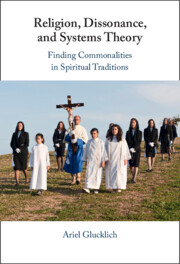Refine listing
Actions for selected content:
1299955 results in Books

German as a Heritage Language
- Contact, Variation and Maintenance
- Coming soon
-
- Expected online publication date:
- January 2026
- Print publication:
- 31 January 2026
-
- Book
- Export citation

Critical Realism in Applied Linguistics
- Coming soon
-
- Expected online publication date:
- January 2026
- Print publication:
- 31 January 2026
-
- Book
- Export citation

Cenozoic Paleobotanical Resource Inventory of the National Park System
- Coming soon
-
- Expected online publication date:
- January 2026
- Print publication:
- 28 February 2026
-
- Element
- Export citation
Towards Tolerance and Acceptance
- Public Opinion and LGBTQ+ Politics in Latin America
- Coming soon
-
- Expected online publication date:
- January 2026
- Print publication:
- 31 January 2026
-
- Element
- Export citation

Religion, Dissonance, and Systems Theory
- Comparing Spiritual Traditions
- Coming soon
-
- Expected online publication date:
- January 2026
- Print publication:
- 31 January 2026
-
- Book
- Export citation
4 - Unwelcome Solidarity
-
-
- Book:
- The Question of Solidarity in Law and Politics
- Published online:
- 22 December 2025
- Print publication:
- 29 January 2026, pp 71-93
-
- Chapter
-
- You have access
- Open access
- HTML
- Export citation
Chapter 4 - Spheres, Capabilities, and Thresholds
-
- Book:
- A New Theory of Sufficientarian Justice
- Published online:
- 12 December 2025
- Print publication:
- 29 January 2026, pp 98-129
-
- Chapter
- Export citation
Notes
-
- Book:
- Five Economies of World Literature
- Published online:
- 09 December 2025
- Print publication:
- 29 January 2026, pp 191-247
-
- Chapter
- Export citation
Copyright page
-
- Book:
- Black Voices in the Halls of Power
- Print publication:
- 29 January 2026, pp iv-iv
-
- Chapter
- Export citation
Index
-
- Book:
- Five Economies of World Literature
- Published online:
- 09 December 2025
- Print publication:
- 29 January 2026, pp 276-282
-
- Chapter
- Export citation
1 - Fertility, Fruitfulness and Anxious Families
-
- Book:
- Making Babies in Early Modern England
- Published online:
- 12 December 2025
- Print publication:
- 29 January 2026, pp 17-49
-
- Chapter
-
- You have access
- Open access
- HTML
- Export citation
7 - A Working-Class Quarter
- from Part III - The Class on the Move
-
- Book:
- Ottoman Reform at Work
- Published online:
- 19 December 2025
- Print publication:
- 29 January 2026, pp 229-267
-
- Chapter
- Export citation
4 - The Association of Southeast Asian Nations (ASEAN) as an International Regime
- from Part II - Prosperity and Specific Regional Trade Arrangements as International Regimes
-
- Book:
- Regional Trade Agreements, Prosperity and the Global South
- Published online:
- 23 December 2025
- Print publication:
- 29 January 2026, pp 87-114
-
- Chapter
- Export citation
10 - British, Irish, Left, Lost
- from Part V - Networks and Nations
-
-
- Book:
- Writing Politics in Modern Britain
- Published online:
- 22 December 2025
- Print publication:
- 29 January 2026, pp 213-233
-
- Chapter
- Export citation
Contents
-
- Book:
- George Frideric Handel
- Published online:
- 23 December 2025
- Print publication:
- 29 January 2026, pp v-v
-
- Chapter
- Export citation
Contents
-
- Book:
- Black Voices in the Halls of Power
- Print publication:
- 29 January 2026, pp v-vi
-
- Chapter
- Export citation
Libraries and archives
-
- Book:
- George Frideric Handel
- Published online:
- 23 December 2025
- Print publication:
- 29 January 2026, pp 681-683
-
- Chapter
- Export citation
13 - The Rhetoric of Dissidence
- from Part VI - The Intellectual Public Sphere
-
-
- Book:
- Writing Politics in Modern Britain
- Published online:
- 22 December 2025
- Print publication:
- 29 January 2026, pp 277-293
-
- Chapter
- Export citation
Epilogue
-
- Book:
- Regional Trade Agreements, Prosperity and the Global South
- Published online:
- 23 December 2025
- Print publication:
- 29 January 2026, pp 208-212
-
- Chapter
- Export citation
Frontmatter
-
- Book:
- George Frideric Handel
- Published online:
- 23 December 2025
- Print publication:
- 29 January 2026, pp i-iv
-
- Chapter
- Export citation
